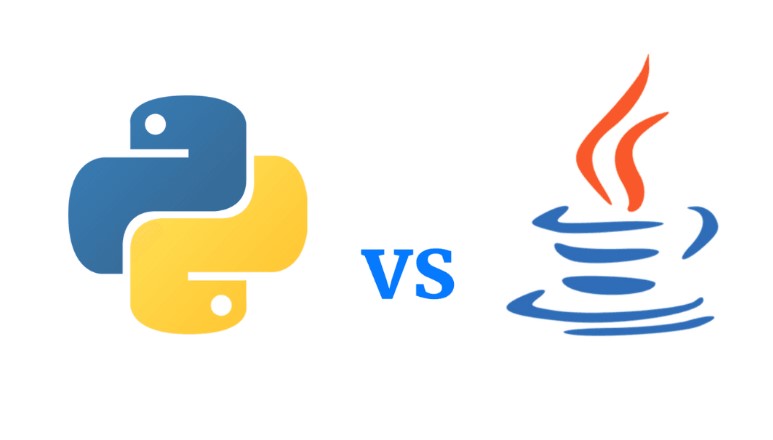Python vs Java for AI Agents

Choosing the right language for building an agent — whether an LLM-powered assistant, an automation bot, or a long-running enterprise service — shapes development speed, integration complexity, performance, and long-term maintenance. This guide compares Python and Java across practical dimensions so you can pick the best fit for your AI agent project.
Quick Insight: For rapid prototyping and LLM/AI integrations, Python typically wins. For large-scale, highly concurrent, enterprise-grade agents, Java often becomes the safer long-term choice.
1. Ecosystem & Libraries
• Python: Rich ecosystem for AI and ML — frameworks, SDKs, and tools are abundant (natural language libraries, model clients, vector DB connectors, data pipelines).
• Java: Mature ecosystem for backend, concurrency, and enterprise integration. AI libraries exist, but many advanced ML/LLM tools are more python-first.
• Verdict: Python leads for AI-native tooling; Java leads for enterprise middleware and JVM integrations.
2. Development Speed & Prototyping
• Python: Concise syntax and interactive REPLs make experimental workflows and rapid prototyping much faster. Great for iterating on prompts, chaining tools, and testing integrations.
• Java: More verbose; better suited when architecture and long-term stability are the priority from day one. Slower to prototype but yields robust, typed codebases.
3. Performance & Scalability
• Python: Good for I/O-bound tasks and orchestration; single-threaded CPU-bound performance is limited (GIL). Scale with workers, async frameworks, or microservices.
• Java: Strong for multi-threaded, CPU-bound, and long-running services. JVM performance, sophisticated GC, and mature concurrency libraries make Java ideal for high-throughput agents.
• Verdict: Java has the edge for raw concurrency and predictable performance; Python scales well with correct architecture.
4. Integrations & Deployment
• Python: Easy integration with AI APIs, vector DBs, orchestration tools, and serverless platforms. Popular for containers, cloud functions, and ML pipelines.
• Java: Excellent integration with enterprise systems, message brokers (Kafka, RabbitMQ), and legacy databases. Strong for deployment into JVM-based stacks and platforms.
• Verdict: Choose Python for cloud-native AI stacks; choose Java if your agent must plug into enterprise backends or existing JVM infrastructure.
5. Tooling, Observability & DevOps
• Python: Good DevOps story via containers, monitoring libraries, and cloud SDKs. Observability tools are available but may require careful design for scale.
• Java: Exceptional mature tooling (profilers, APMs, logging, metrics) and enterprise-grade observability integrations.
• Verdict: Java has stronger out-of-the-box enterprise tooling; Python teams can match this with modern observability stacks.
6. Safety, Security & Compliance
• Both languages can be built securely, but Java’s strict typing and established enterprise patterns reduce certain classes of runtime errors.
• Python’s dynamic nature requires more testing discipline; however, many mature security libraries and patterns exist.
• For regulated environments, Java often aligns more naturally with compliance controls and long-term maintenance practices.
7. Learning Curve & Hiring
• Python: Easier to learn; large pool of AI/ML engineers and data scientists. Faster onboarding for ML-centric teams.
• Java: Requires stronger software engineering discipline and knowledge of JVM internals for advanced tuning. Larger pool for enterprise backend roles.
• Verdict: If you need ML talent and rapid iteration, Python hiring is easier. For enterprise engineering teams, Java experience is often prevalent.
Recommended Choices by Agent Type
• Prototype LLM agent, research, or prompt engineering: Python — fastest to build and iterate.
• Automation bot that orchestrates APIs and scripts: Python — excellent libraries and scripting speed.
• High-throughput, long-running enterprise agent: Java — predictable performance and strong concurrency.
• Hybrid approach: Use Python for the AI/ML layer (model orchestration, prompt logic) and expose it via APIs to a Java backend that handles scale, routing, and integration.
Practical Architecture Template (Recommended)
• AI Layer (Python): handles LLM calls, prompt chaining, embeddings, and vector search; deployed as scalable microservices or serverless functions.
• Backend Layer (Java): manages user sessions, high-volume routing, authentication, and integration with enterprise systems.
• Data & Infra: vector DB, SQL/NoSQL stores, message broker (Kafka/RabbitMQ), and observability stack.
• This hybrid pattern gives the best of both worlds: developer velocity and enterprise reliability.
Final Recommendation
Choose Python if your priority is rapid development, access to AI/ML tooling, and fast iteration. Choose Java if your agent must integrate tightly into an enterprise JVM stack and deliver predictable, high-concurrency performance. For most modern AI agent projects — particularly those focusing on LLMs, prompt engineering, and data work — starting with Python (and evolving into a hybrid architecture when needed) offers the most pragmatic path.
